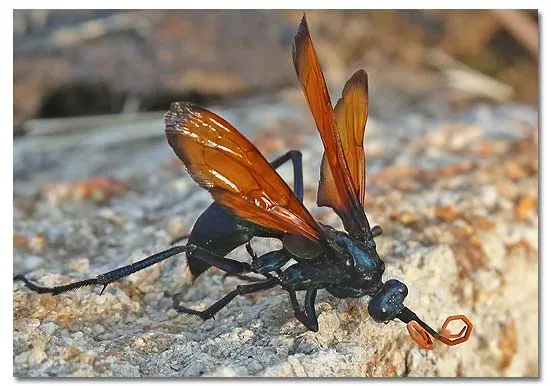What are Tarantula Hawks
Tarantula hawks are a fascinating species of large, powerful wasps belonging to the Pompilidae family. They are renowned for their size, vibrant colors, and, infamously, one of the most painful stings in the insect world. These wasps are not just a spectacle to behold, but also play a crucial role in their ecosystem. They are solitary wasps, meaning they do not live in colonies like bees or ants. Instead, each female tarantula hawk operates independently, hunting and providing for her offspring. They are a testament to the intricate and often brutal beauty of the natural world. Their existence is a delicate balance of predator and prey, with the tarantula hawk at the top of the food chain within its specific niche.
Appearance and Identification
Identifying a tarantula hawk is relatively straightforward due to their striking appearance. They are typically large, with females often reaching lengths of up to 2 inches. Their bodies display a vivid coloration, usually a combination of a metallic blue-black body and bright orange or rusty-red wings. This vibrant coloration serves as a warning to potential predators, signaling their potent sting. Their legs are long and spiny, adapted for grasping and maneuvering both on the ground and in flight. The overall appearance is quite distinctive, making them easily recognizable among other wasp species.
Distinguishing Features
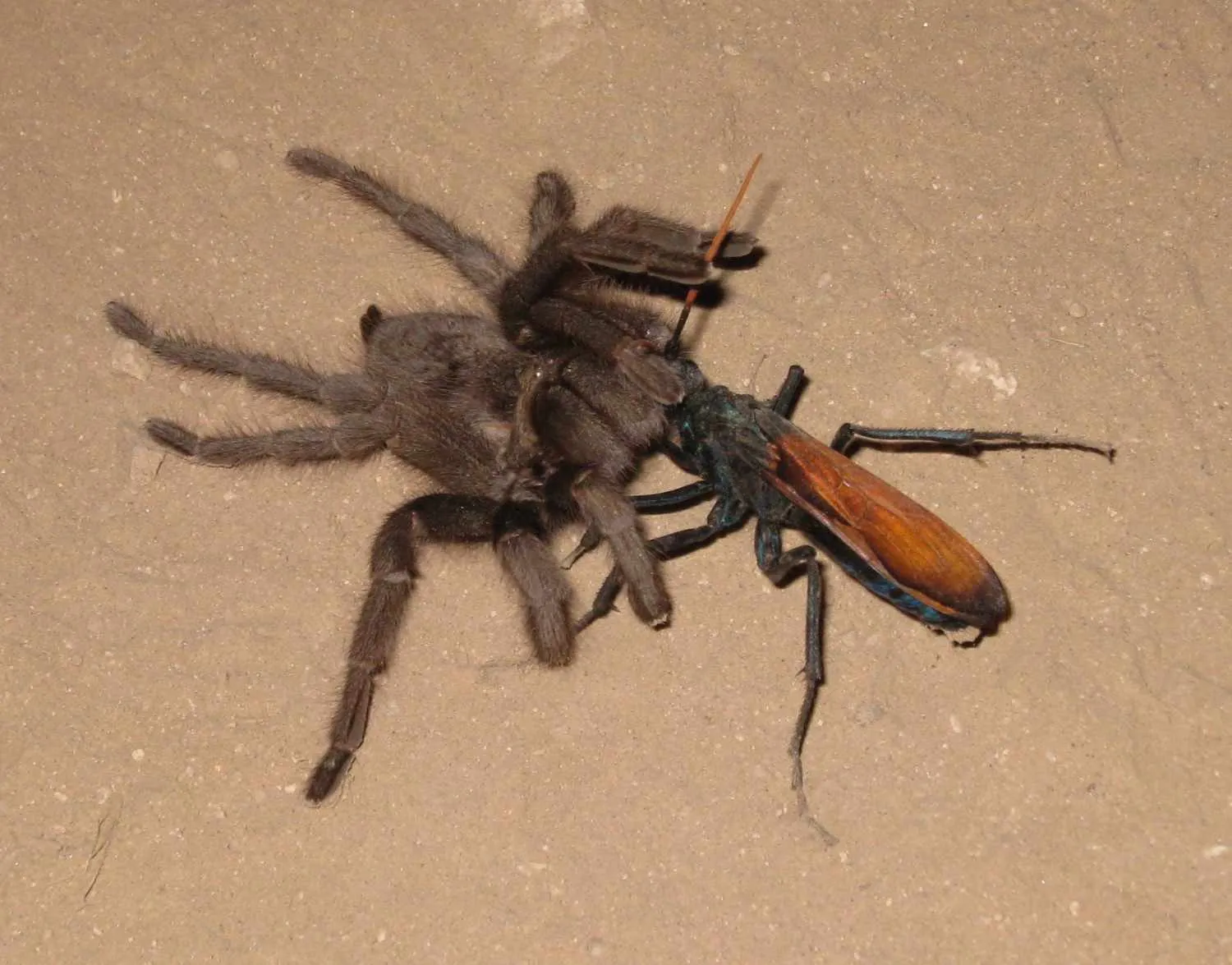
The key features that distinguish tarantula hawks include their size, the distinctive body and wing coloration, and their behavior. The large size, coupled with the metallic body and orange wings, immediately sets them apart from most other wasps. Their powerful legs and robust build are also notable. Unlike many other wasps, tarantula hawks are relatively docile unless provoked. They are not aggressive towards humans unless they feel threatened. Their primary focus is on hunting tarantulas, so they are typically not interested in human interaction. Recognizing these traits will help you identify them in the field.
Habitat and Distribution
Tarantula hawks are primarily found in the southwestern United States, including Texas. They prefer arid and semi-arid environments where their primary prey, tarantulas, are abundant. The wasps thrive in areas with sandy or loamy soils, which provide suitable nesting sites. They are also found in scrublands, deserts, and open woodlands. Their distribution is closely linked to the presence of tarantulas, as these spiders are essential for their life cycle. The warmer climates and specific habitats of Texas make it an ideal environment for tarantula hawks.
Where They Thrive in Texas
In Texas, tarantula hawks are most commonly found in the western and southern regions, including areas such as the Texas Hill Country, Big Bend National Park, and other arid or semi-arid environments. These regions provide the necessary climate and habitat for both the wasps and their tarantula prey. They are less common in the eastern parts of Texas due to the differing environmental conditions, such as increased humidity and denser vegetation. Knowing the specific areas where they are most prevalent can increase the chances of observing these fascinating creatures in their natural habitat.
Ideal Environmental Conditions
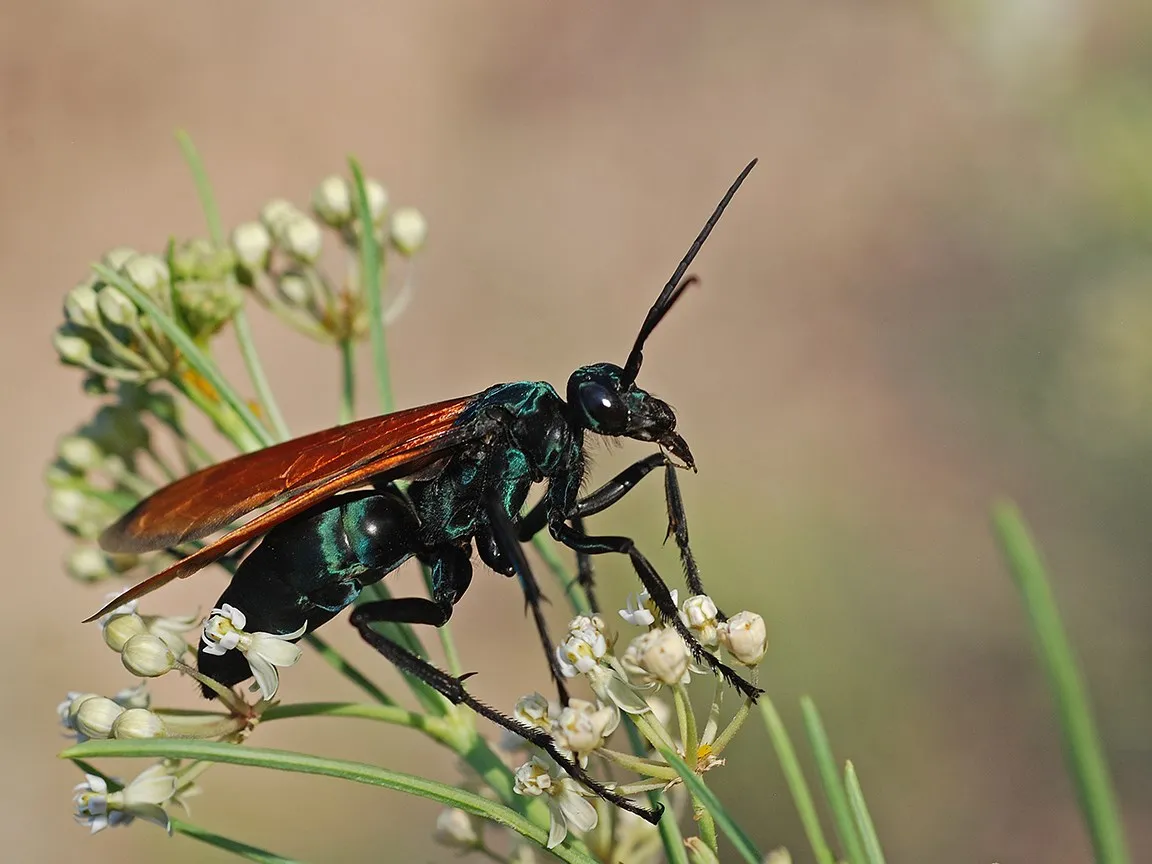
Ideal environmental conditions for tarantula hawks include warm temperatures, low humidity, and access to suitable nesting sites. They require open, sunny areas with sandy or loamy soil for digging their nests. A good supply of tarantulas is, of course, crucial for their survival and reproduction. The availability of nectar sources, such as wildflowers, is also important, as adult tarantula hawks feed on nectar. The combination of these elements creates a thriving environment for both the tarantula hawks and the broader ecosystem.
The Tarantula Hawk Life Cycle
The life cycle of a tarantula hawk is a remarkable display of nature’s complexity. It begins with the female wasp hunting a tarantula. Once captured, the wasp paralyzes the spider with its sting, dragging it to a burrow or nest. There, the wasp lays a single egg on the spider’s abdomen. When the egg hatches, the larva feeds on the paralyzed but still-living spider. After consuming the spider, the larva pupates, transforming into an adult wasp. The entire process, from egg to adult, can take several weeks or months, depending on environmental conditions. This unique and brutal life cycle highlights the fascinating behaviors of these wasps.
Hunting and Reproduction
Hunting tarantulas is a dangerous and complex task for the female tarantula hawk. The wasp uses its keen senses to locate tarantulas, often by detecting vibrations in the ground. Once a tarantula is found, the wasp engages in a fierce battle, stinging the spider to paralyze it. The wasp then drags the paralyzed tarantula to its nest, where it lays an egg on the spider’s abdomen. Reproduction is a solitary endeavor, with each female wasp responsible for her offspring. This process underscores the remarkable adaptations and instincts of these creatures.
The Sting and Its Effects

The sting of a tarantula hawk is infamous for its excruciating pain, often described as the most painful insect sting. The pain is immediate and intense, lasting for several minutes. The venom primarily targets the nervous system, causing paralysis and intense burning. The sting is not typically life-threatening to humans, but it can be incredibly distressing. The effects are mainly localized to the sting site, with minimal systemic effects. The pain, however, can be debilitating for a short period. It is best to avoid provoking these wasps to minimize the chances of being stung.
Diet and Behavior
Adult tarantula hawks primarily feed on nectar from flowers, using their long tongues to extract the sweet liquid. The nectar provides them with the energy needed for flight and other activities. The larvae, however, have a much more specific diet: they consume the paralyzed tarantula provided by their mother. This diet is rich in nutrients, supporting the larva’s growth and development. Their behavior is largely centered around hunting, nesting, and reproduction. They are not generally aggressive toward humans unless they feel threatened, typically only engaging in defensive behavior.
Primary Food Sources
The primary food sources for tarantula hawks differ between the adult and larval stages. Adult tarantula hawks rely on nectar from various flowering plants for their energy needs. This includes plants found in their arid habitat. Larvae are obligate parasites, feeding exclusively on the paralyzed tarantulas. The tarantula provides all the necessary nutrients for the wasp larva to grow and develop. This dietary specialization highlights the tarantula hawk’s role within its ecosystem.
Defensive Strategies
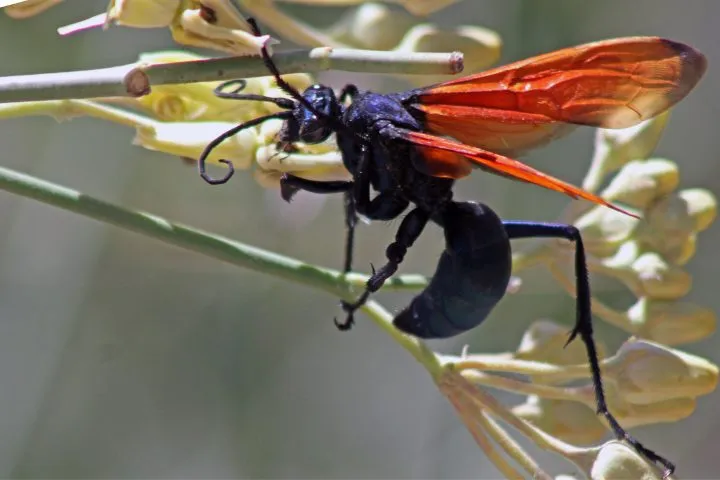
Tarantula hawks have several defensive strategies. Their most formidable defense is, of course, their sting, which they use to paralyze both tarantulas and potential threats. Their bright coloration also serves as a warning signal to predators, indicating their dangerous nature. They are also known for their agility and ability to quickly escape when threatened. Their focus is primarily on hunting tarantulas and nesting, they avoid confrontation whenever possible. Avoiding human contact is also part of their defensive behavior.
Interactions with Humans
Interactions between tarantula hawks and humans are relatively rare due to the wasp’s solitary nature and avoidance of human contact. However, encounters can happen, especially in areas where both tarantula hawks and humans coexist. Most interactions involve accidental encounters, such as when people are gardening or hiking in their habitat. While the wasps are not aggressive unless provoked, the potential for a painful sting remains a concern, especially if someone inadvertently steps on or handles them. Awareness and respect for these insects are crucial to minimize negative interactions.
Potential Risks
The primary risk associated with tarantula hawks is their sting. The sting is extremely painful, and while not typically life-threatening, it can cause significant discomfort. Allergic reactions, though rare, are possible. Beyond the sting, there are minimal other risks. They are not known to transmit diseases or pose a significant threat to human health, provided they are not provoked. Caution and awareness of their presence are essential to avoid potential stings. Avoiding rapid movements when near these insects can prevent accidental stings.
First Aid if Stung
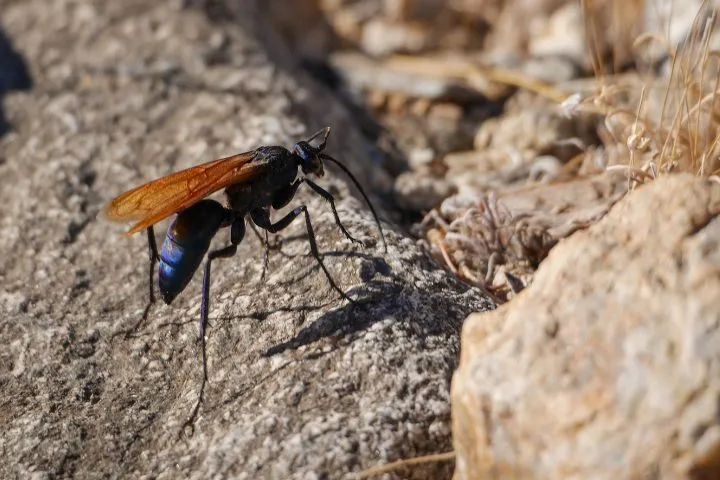
If stung by a tarantula hawk, the immediate focus should be on managing the pain. There is no specific antidote for the sting, so treatment is primarily symptomatic. Applying ice packs to the sting site can help reduce pain and swelling. Taking over-the-counter pain relievers, such as ibuprofen or acetaminophen, can alleviate some discomfort. It is essential to remain calm, as the pain is intense but temporary. If there are signs of a severe allergic reaction, such as difficulty breathing or swelling of the face or throat, seek immediate medical attention. In most cases, the pain subsides within a few hours.
Conservation Status and Threats
Tarantula hawks are not currently listed as endangered or threatened. They have relatively stable populations across their range. However, like many species, they face potential threats from habitat loss and pesticide use. Habitat destruction, due to urbanization and agricultural development, can reduce their available nesting sites and food sources. The use of pesticides can also impact their prey, the tarantulas, indirectly affecting the wasp population. Conservation efforts should focus on protecting their habitat and promoting responsible land management practices to ensure the continued survival of these remarkable insects.
Current Population Trends
Current population trends for tarantula hawks are generally stable. Their populations are relatively resilient. However, localized declines can occur due to specific factors. These wasps are adaptable to various environmental conditions, but continued monitoring is crucial to detect any significant changes. Research into their distribution, behavior, and environmental impact continues to provide valuable insights. Conservation efforts should focus on monitoring and managing their habitat. This helps ensure that any potential threats can be addressed proactively to protect the species.
